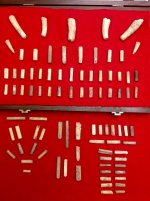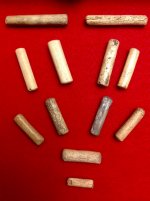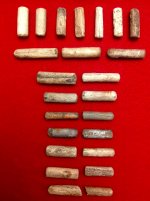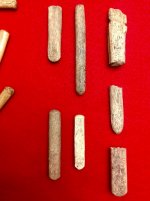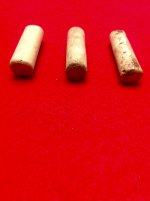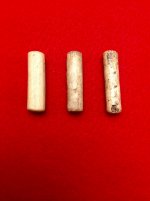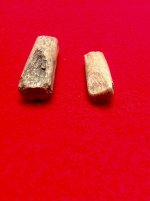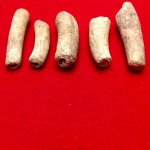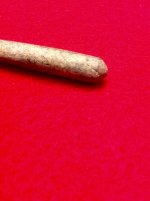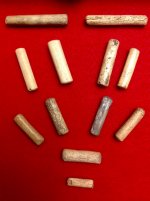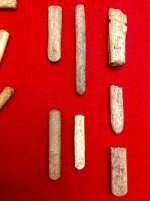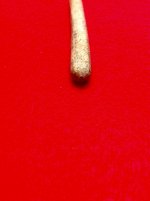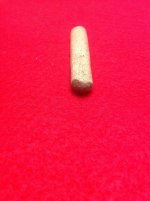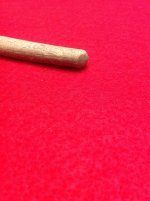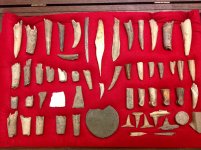For those who are interested in bonafide prehistoric flintknapping tools and practices, I spoke at the Society for American Archaeology annual conference about prehistoric flakers.
Here I am speaking about antler punches recovered from Colha.

Here is a prehistoric sheephorn punch showing silicate fragments embedded in the ends.

Here is an electronic scan of a biface that is believed to have been made with the sheephorn punch:

Here is an antler drift punch not unlike those in the collection of "Grim Reaper" that was used to experimentally flake the following biface, with a technology that was cited at least one time during the 19th century:

Notice the width of the flake scar initiations at the edge, and the width of the flake scars five millimeters from the edge. Compare to the preceding flake scars shown on the Basketmaker II biface.
Here is a photo that shows the relative thinness of the biface:

Here is a profile of a Basketmaker II biface with evidence of being made with a sheephorn punch (compare to the previous experimental photo):

The Basketmaker II people created thin bifaces with a tool of indirect percussion that shares basic morphological attributes with the antler drift punches, more commonly found in eastern North America.
If you want to see the best collection of such flakers on the net, be sure to look up Grim Reaper's antler drift collection.
Also, for those who are interested in ancient knapping technology, the tools shown here were in continuous use from the advent of the archaic era through the historic era.
Here I am speaking about antler punches recovered from Colha.

Here is a prehistoric sheephorn punch showing silicate fragments embedded in the ends.

Here is an electronic scan of a biface that is believed to have been made with the sheephorn punch:

Here is an antler drift punch not unlike those in the collection of "Grim Reaper" that was used to experimentally flake the following biface, with a technology that was cited at least one time during the 19th century:

Notice the width of the flake scar initiations at the edge, and the width of the flake scars five millimeters from the edge. Compare to the preceding flake scars shown on the Basketmaker II biface.
Here is a photo that shows the relative thinness of the biface:

Here is a profile of a Basketmaker II biface with evidence of being made with a sheephorn punch (compare to the previous experimental photo):

The Basketmaker II people created thin bifaces with a tool of indirect percussion that shares basic morphological attributes with the antler drift punches, more commonly found in eastern North America.
If you want to see the best collection of such flakers on the net, be sure to look up Grim Reaper's antler drift collection.
Also, for those who are interested in ancient knapping technology, the tools shown here were in continuous use from the advent of the archaic era through the historic era.
Last edited:
Upvote
0


